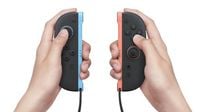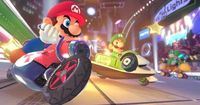Nintendo is set to make a significant impact in the esports landscape with the upcoming release of the Nintendo Switch 2 on June 5, 2025. This new console, which boasts remarkable improvements such as the ability to play games at 4K resolution and 120 frames per second at certain settings, is expected to reshape the competitive gaming scene.
Announced earlier this year, the Nintendo Switch 2 will launch with a strong lineup of games, including Mario Kart World, Street Fighter 6, and enhanced versions of Legend of Zelda: Breath of the Wild and Tears of the Kingdom. The introduction of these titles could provide Nintendo with a unique opportunity to carve out a more significant presence in the esports arena, especially as Street Fighter 6 is one of the biggest esports games currently available.
Reflecting on the past, Nintendo's relationship with esports has been rocky. Back in 2016, the company was struggling with the Wii U, which failed to gain traction. However, the release of the Nintendo Switch in 2017 marked a turning point, with the console quickly becoming a favorite among gamers due to its versatility and strong game library. Titles like Super Smash Bros Ultimate and Splatoon 3 began to make their mark in competitive gaming, though Nintendo's strict regulations surrounding tournament participation often drew criticism.
For instance, the company limited the number of players allowed in non-licensed events and capped the prize pool at $10,000, which alienated many in the esports community. With the Switch 2, there is hope that Nintendo will loosen its grip on esports events, allowing for greater flexibility and participation.
The new console's enhanced capabilities mean that games like Street Fighter 6 will support cross-platform play, enabling players on PlayStation 5 to compete against those on the Switch 2. This could potentially lead to a broader range of esports titles available on the platform, including League of Legends and Tekken 8, thereby expanding the competitive landscape.
Moreover, the Switch 2's Gamechat feature, accessible via the 'C' button on the Joy-Con 2 controllers, allows players to create party chats, enhancing the social aspect of gaming. While this feature may not yet rival the streaming capabilities of competitors like Xbox and PlayStation, it represents a step in the right direction for Nintendo.
As the esports industry continues to grow, with events like the Olympic Esports Games set for 2027, Nintendo has a chance to capitalize on this momentum. By investing in esports now, the company could establish a significant presence at future events.
In addition to its esports aspirations, Nintendo is maintaining its unique design philosophy with the Switch 2. The console will not feature a system-wide achievement system, a decision rooted in the company's commitment to player freedom. Nintendo VP Bill Trinen confirmed that the lack of unified achievements aligns with the company's goal of encouraging exploration and creativity without imposing external rewards.
While some fans have expressed disappointment over this decision, the Switch 2 will still include achievements for specific games, such as Zelda: BOTW and TOTK, tracked via the Nintendo Switch App. This approach indicates that while Nintendo may not adopt a traditional achievement system, it is still responding to player feedback.
Furthermore, recent updates to the Nintendo eShop reveal a shift in how download charts are determined. As of April 30, 2025, the charts now rank titles by sales revenue for the past three days rather than the number of downloads over two weeks. This change has led to a noticeable absence of indie games from the 'All Games' Charts tab, raising questions about discoverability on the platform.
The update hints at how the eShop might function on the Switch 2, with new features like Virtual Game Card and GameShare options added to the menu. This evolution in the eShop could enhance the user experience and streamline how players access and purchase games.
One of the most notable improvements in the Switch 2 is its Joy-Con controllers, which will feature quieter HD Rumble compared to the original Switch. This change addresses concerns from players who found the previous version's vibrations too noisy. Although this may affect some unique gameplay mechanics that utilize sound from the rumble feature, it ultimately enhances the gaming experience.
Additionally, the Nintendo Switch version 20.0.0 firmware update has introduced a system transfer tool, making it easier for players to transition from their old Switch to the new console. This tool allows for the transfer of software, user profiles, saves, screenshots, videos, and settings via local communication or through a dedicated server. After completing the transfer, the original Switch resets to factory settings, preparing it for resale or donation.
As the launch of the Nintendo Switch 2 approaches, excitement is building within the gaming community. With a robust library of games and a focus on enhancing the esports experience, Nintendo is poised to make a significant impact in the competitive gaming landscape. The time is ripe for the company to embrace the potential of esports, and if it successfully navigates this transition, it could very well become a key player in the industry.






